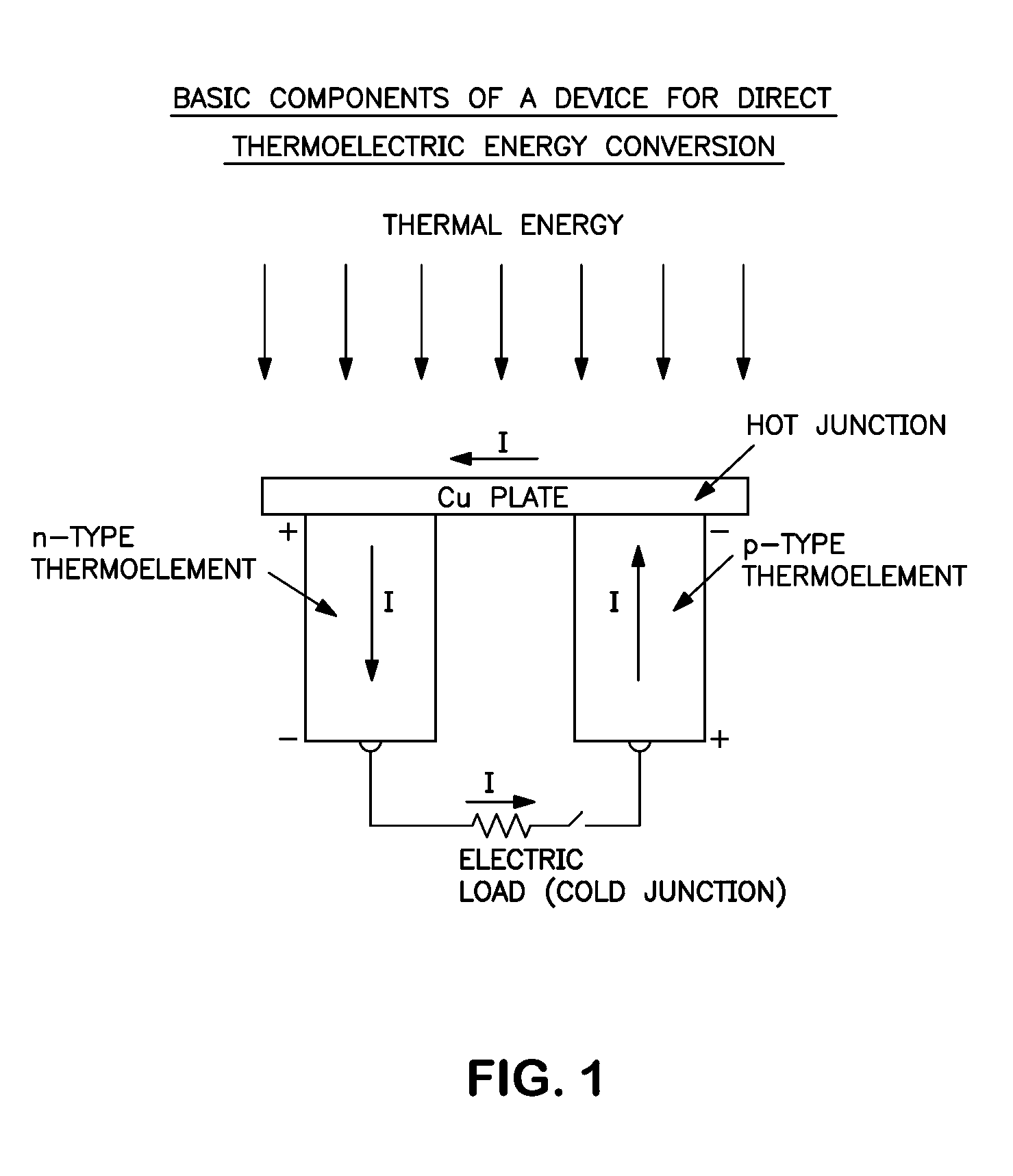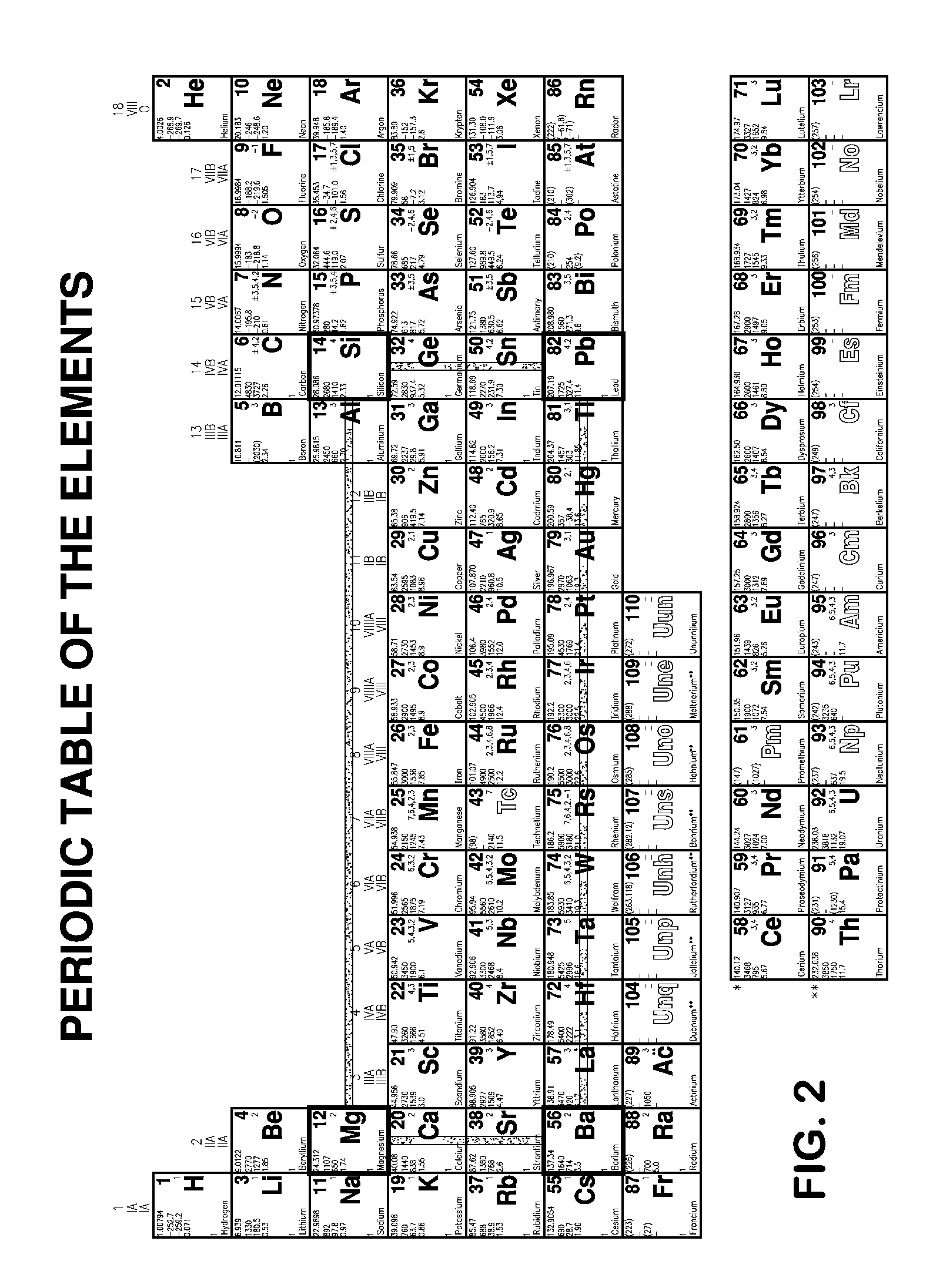Method for producing a device for direct thermoelectric energy conversion
a technology of thermoelectric energy conversion and production method, which is applied in the direction of thermoelectric device junction materials, crystal growth processes, electrical apparatus, etc., can solve the problems of brittleness, temperature dependent properties and lack of chemical stability, energy conversion efficiency, and complex metal properties, so as to reduce the overall dimension and increase the energy conversion efficiency of the device
- Summary
- Abstract
- Description
- Claims
- Application Information
AI Technical Summary
Benefits of technology
Problems solved by technology
Method used
Image
Examples
first embodiment
[0041]According to another embodiment or aspect of this invention, the additional doping materials for the n-type branch of the device, as defined in the preceding first embodiment, comprise one, or more, elements, selected from the group consisting of nitrogen, phosphorus, arsenic, antimony, bismuth, oxygen, sulfur, selenium, tellurium, chlorine, bromine, iodine, magnesium, barium, lithium, gold, aluminum, indium, iron and / or compounds thereof.
[0042]According to another embodiment or aspect of this invention, the additional doping materials, for the p-type branch of the device, as defined in the preceding first embodiment, comprise one, or more, elements, selected from the group consisting of copper, silver, sodium, potassium, rubidium, cesium, boron, silicon, lead and / or compounds thereof.
[0043]According to another embodiment or aspect of this invention, as defined in the preceding three embodiments, r varies from 0.1 to 0.4, (1−r) varies from 0.6 to 0.9, x varies from 0.1 to 0.3 ...
seventh embodiment
[0048]According to another embodiment or aspect of this invention, the additional doping material, or materials, for the p-type branch of the device, in the preceding seventh embodiment, comprise one, or more, elements, selected from the group consisting of copper, silver, sodium, potassium, rubidium, cesium, boron, silicon, lead and / or one, or more, of the compounds of these elements.
[0049]According to another embodiment or aspect of this invention, in the foregoing three embodiments, r varies from 0.1 to 0.4, (1−r) varies from 0.6 to 0.9, each of u, v and w varies from 0 to 0.3, (u+v+w) varies from 0 to 0.3, z is not less than 0.1, s varies from 0.1 to 0.3, (1−s) varies from 0.7 to 0.9, each of a, b, d, e, f and g varies from 0 to 0.2, (a+b+d+e+f+g) varies from 0 to 0.2, c is not less than 0.1, the atomic, or molecular, proportion of the doping material, or materials, in the alloy varies from 10−8 to 10−1 and the free charge carrier concentration varies from 1×1015 to 5×1020 carri...
PUM
| Property | Measurement | Unit |
|---|---|---|
| atomic numbers | aaaaa | aaaaa |
| atomic numbers | aaaaa | aaaaa |
| atomic numbers | aaaaa | aaaaa |
Abstract
Description
Claims
Application Information
 Login to View More
Login to View More - R&D
- Intellectual Property
- Life Sciences
- Materials
- Tech Scout
- Unparalleled Data Quality
- Higher Quality Content
- 60% Fewer Hallucinations
Browse by: Latest US Patents, China's latest patents, Technical Efficacy Thesaurus, Application Domain, Technology Topic, Popular Technical Reports.
© 2025 PatSnap. All rights reserved.Legal|Privacy policy|Modern Slavery Act Transparency Statement|Sitemap|About US| Contact US: help@patsnap.com



